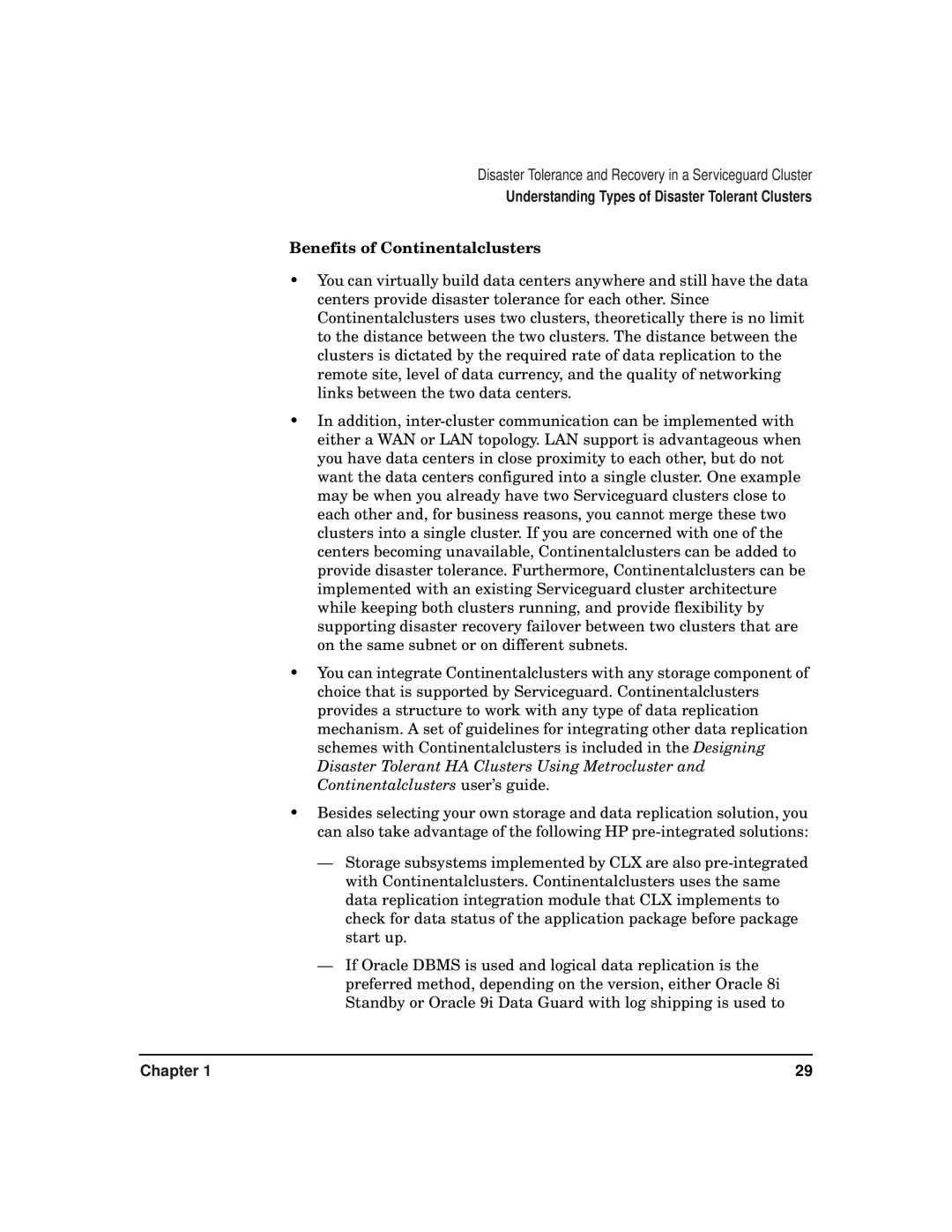Disaster Tolerance and Recovery in a Serviceguard Cluster
Understanding Types of Disaster Tolerant Clusters
Benefits of Continentalclusters
•You can virtually build data centers anywhere and still have the data centers provide disaster tolerance for each other. Since Continentalclusters uses two clusters, theoretically there is no limit to the distance between the two clusters. The distance between the clusters is dictated by the required rate of data replication to the remote site, level of data currency, and the quality of networking links between the two data centers.
•In addition,
•You can integrate Continentalclusters with any storage component of choice that is supported by Serviceguard. Continentalclusters provides a structure to work with any type of data replication mechanism. A set of guidelines for integrating other data replication schemes with Continentalclusters is included in the Designing Disaster Tolerant HA Clusters Using Metrocluster and Continentalclusters user’s guide.
•Besides selecting your own storage and data replication solution, you can also take advantage of the following HP
—Storage subsystems implemented by CLX are also
—If Oracle DBMS is used and logical data replication is the preferred method, depending on the version, either Oracle 8i Standby or Oracle 9i Data Guard with log shipping is used to
Chapter 1 | 29 |
